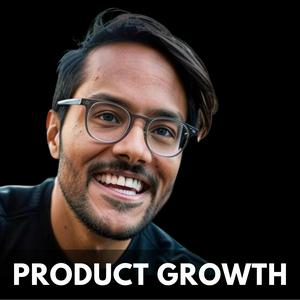How to Build AI Agents to 10x your PM Productivity with CEO of Relay.app (fmr Dir PM of Gmail)
You use ChatGPT. But being an AI-powered PM means also using AI agents.In my slack poll, only 2% of you said you use AI agents for productivity. So I want to break that down and make it dead clear: 1) why you should use AI agents and 2) how you should build them.So in today’s episode, I’ve brought in Jacob Bank, former Director of PM at Google (Gmail, Calendar) and now CEO of the AI agent builder company Relay.app.He shares all his secrets - his 12 agent EA, his 40 agent marketing team, and his agent to synthesize agent updates. I hope you enjoy.----🏆 Thanks to our sponsors:Miro: The innovation workspace is your team's new canvasJira Product Discovery: Plan with purpose, ship with confidenceMobbin: Discover real-world design inspirationProduct Faculty: Product Strategy Certificate for Leaders (Get $550 off)----⏰ Timestamps:00:00 Intro01:49 Meet Jacob: The AI Agent Pioneer02:18 Managing Agent Notification Overload04:13 Current AI Agent Limitations Explained06:59 Relay's Growth & Bootstrap Strategy10:25 The Bull Case for AI Agent Market15:14 Ads17:18 Who's Adopting AI Agents Fastest20:46 Top 10 AI Agent Use Cases for PMs22:48 Choosing the Right Agent Platform28:44 Jacob's 55-Agent Marketing Team Breakdown31:47 Ads34:45 Building AI Agents Into Your Product38:10 MCP Protocol & Future of APIs41:43 Why Jacob Left Google Director Role44:25 Brutal Truth: PM-to-Founder Reality Check48:52 Outro----Key Takeaways1. Real agents need five components working togetherIntelligence (LLM), Knowledge (proprietary data), Memory (interaction history), Tools (APIs that change world state), Guardrails (validation and safety). Most "agents" are just LLM wrappers missing the other four components.2. No-code tools compress development cycles 100xLangflow + v0 enable 30-minute prototype-to-production workflows. Build competitive analysis agents live on screen. The cost barrier disappeared while customers still can't articulate what they want until they see it working.3. Cart-before-horse development beats traditional PM processSkip months of research. Build working prototypes first, test with real users, iterate based on feedback, then write focused PRDs. Speed beats perfection when technology moves this fast.4. FAANG salaries reflect desperate demandLevel 6-7: $750K+ total compensation. Level 8+: $1.2-1.5M total compensation. OpenAI: $900K+ for comparable roles. Growth rate: 2-3x faster than traditional PM positions because supply can't meet demand.5. The proven 18-month roadmap works systematicallyMonths 1-3: master fundamentals, build working agent solving personal problems. Months 4-9: scale to 10-20 real users, learn evaluation systems. Months 10-18: contribute to open source, prove you outperform existing team members.6. Vibe coding interviews test product judgment, not technical skillsDemonstrate structured thinking through prompt engineering, incorporate user insights in second iterations, show measurement frameworks in third iterations. They're evaluating product sense through AI interactions.7. Target problems with three characteristics for defensibilityDomain expertise you already possess, unstructured data requirements, complex decision-making processes. This combination creates competitive moats that simple AI features cannot replicate easily.8. Evaluation frameworks must come before codingMeasure usage adoption, outcome achievement, and user experience satisfaction. Include speed metrics (prompts to completion) and accuracy benchmarks (goal success rates) to validate that AI actually democratizes building.9. Company cultures reward different AI approachesMicrosoft: innovation without business constraints. Amazon: profit-focused execution speed. Meta: collaboration with world-class engineering talent. Google: user experience perfection with iteration time.10. Essential PM tools everyone needsCustomer interaction analyzer across all channels, AB testing simulator using AI personas at scale, document reviewer trained on your manager's specific feedback patterns an----Related ContentRelated Podcasts:* He built the top AI agent startup* AI Agents for PMs in 69 Minutes* How to Build AI Agents (and Get Paid $750K+)Realated Newsletters:* AI Agents: The Ultimate Guide for PMs* Ultimate Guide to AI Prototyping Tools* How to Land a $300K+ AI Product Manager Job----P.S. More than 85% of you aren't subscribed yet. If you can subscribe on YouTube, follow on Apple & Spotify, my commitment to you is that we'll continue making this content better.----If you want to advertise, email productgrowthppp at gmail. This is a public episode. If you'd like to discuss this with other subscribers or get access to bonus episodes, visit www.news.aakashg.com/subscribe


